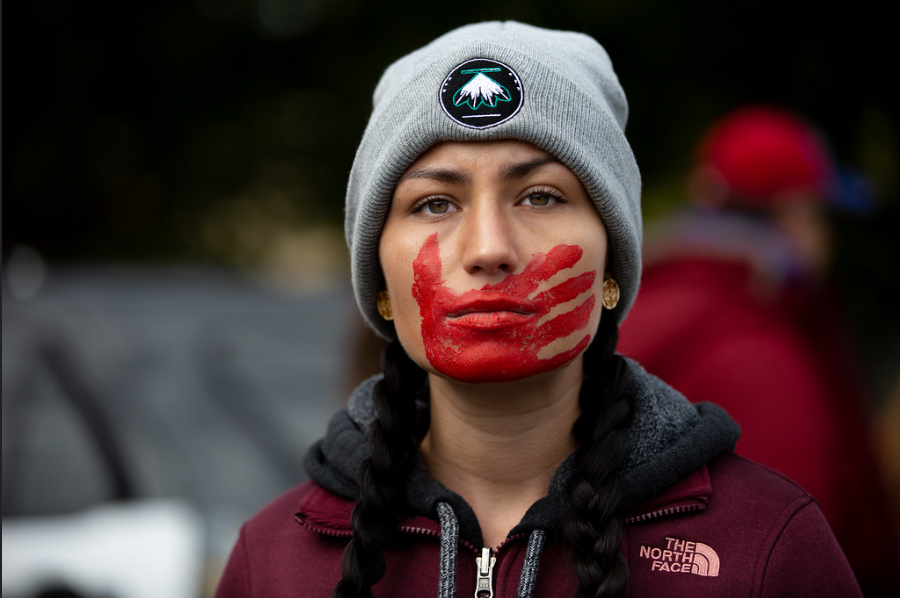6.6 Indigenous Populations in Rural America
Indigenous people in the United States – including those who identify as American Indian, Alaska Native, and Native Hawaiian in the census – account for less than 5 percent of the total rural population. Although they make up a small percentage of rural America overall, 54 percent of American Indian and Alaska Native people (AIAN) live in rural areas, and many are concentrated in communities with high levels of poverty (Center on Rural Innovation, 2023a; 2023b; Dewees & Marks, 2017). Forced displacement of Indigenous peoples throughout the nation’s history, treaty agreements between the federal government and Indigenous Tribes, and legally recognized boundaries of Tribal land all contribute to the current residential patterns of Indigenous people. For example, the largest American Indian population can still be found in the area now known as Oklahoma (Sánchez-Rivera et al., 2023) as a result of the forced removal of Indigenous people from east of the Mississippi River to the west. This oppressive history, as well as the long-standing characterization of Indigenous people as violent savages, has shaped the way this population is treated in the modern United States.
Indigenous communities experience high rates of violent victimization, domestic violence, and alcohol abuse. About 84 percent of Indigenous women and 82 percent of Indigenous men have experienced violence in their lifetime, and the murder rate for Indigenous women is three times higher than that of Anglo-American women. Only one in three suspects in homicide cases involving AIAN victims is also American Indian or Alaska Native, meaning the majority of Indigenous murder victims are killed by someone outside of their community (Rosay, 2016). Many cases of missing or murdered Indigenous women go unsolved; as of 2016, the National Crime Information Center has nearly 6,000 cases of missing AIAN women and girls, while the U.S. Department of Justice only reports 116 cases (Native Women’s Wilderness, n.d.).
Activity: The MMIW Movement

Explore the hashtag #NoMoreStolenSisters on your social media platform of choice or through a Google search and consider what can be done to address this problem.
If you want to learn more, you can check out the MMIW website or listen to the We Are Resilient podcast.
Some contributing factors to these alarming statistics include inaccessible services and media coverage. First, lack of resources is common in rural America and largely puts rural residents at educational, financial, and health disadvantages compared to their urban counterparts. Such resource deprivation is particularly problematic in predominantly Indigenous communities (Cromer et al., 2019). Services for medical care, alcohol abuse treatment, or victim support and advocacy may be nonexistent in rural areas, and urban services are often inaccessible without consistent public transportation. These barriers make it difficult for those in need of help to get it. Second, while media coverage of crime has both positive and negative impacts, it can bring attention to important issues and even prompt more time and resource allocation from police. According to a report by the University of Wyoming, only 30 percent of Indigenous victims of murder received coverage in newspapers between 2000 and 2020, compared to 51 percent of white murder victims. Furthermore, Indigenous victims were more likely to be portrayed in a negative light and have less information provided (Grant et al., 2020). Because a high percentage of the Indigenous population lives in rural areas, issues of justice regarding this community require attention to the impact of the rural context.
Another significant justice issue regarding the Indigenous population involves the high rate of police brutality against Indigenous peoples. There are over 200 Tribal police agencies in the United States that are responsible for policing their specific communities. However, jurisdiction over crimes committed in recognized Tribal communities can vary by the type and seriousness of the crime, the membership of the offender or victim, and the exact location of the offense. Consequently, Indigenous people may come into contact with state, local, or Tribal police officers depending on where they live. For example, in 2021, federal law enforcement agencies arrested over 2,500 AIAN people (Perry, 2023).
The official data on non-fatal and fatal shootings by police in the United States is poor. However, multiple sources that collect information about officer-involved shootings, including The Washington Post and The Guardian, find that Indigenous people are disproportionately murdered by law enforcement. The Mapping Police Violence project reports that Native Americans are 1.6 times more likely to be killed by police than white people, based on information collected between 2013 and 2024 (Mapping Police Violence, 2024).
An example of a fatal interaction with local rural police can be seen in 2019, when police officers in Sallisaw, Oklahoma, shot and killed 27-year-old Shawn Taylor Watie. Police were responding to a “suspicious person” call in which the caller stated the person walking along the road looked like a man who had recently escaped from a Missouri prison. Shawn, a member of the Cherokee Nation, was walking to work when police killed him, claiming that he had come after them with a knife. The officers were not wearing body cameras, and family members dispute the idea that Shawn would attack police.
Licenses and Attributions for Indigenous Populations In Rural America
Open Content, Original
“Rural Indigenous Populations in Rural America” by Jessica René Peterson is licensed under CC BY 4.0
Open Content, Shared Previously
Figure 6.23. “A participant in the Greater Than Fear Rally & March in Rochester, Minnesota. The rally & march were held in response to President Trump’s Rally at the Mayo Civic Center in downtown Rochester,” by Laurie Shall is licensed under CC BY-SA 2.0.
simply put, non-urban spaces with lower populations and lots of undeveloped land

